A tour of Yukon Energy’s Whitehorse power plants
A couple of weeks ago, I happened to notice a comment on Yukon Energy’s Facebook page that they were going to do a tour of their power production plants (both hydroelectric and diesel) the following day, and I popped a note off to them to put me on the list. Although I’ve been on the tour before, I find the place fascinating.
The tour met at the Millennium Trail parking lot in Riverdale just before 10:00 am on a bitterly cold morning. The walk across the bridge with a stiff wind blowing down the Yukon River was “invigorating”! 🙂
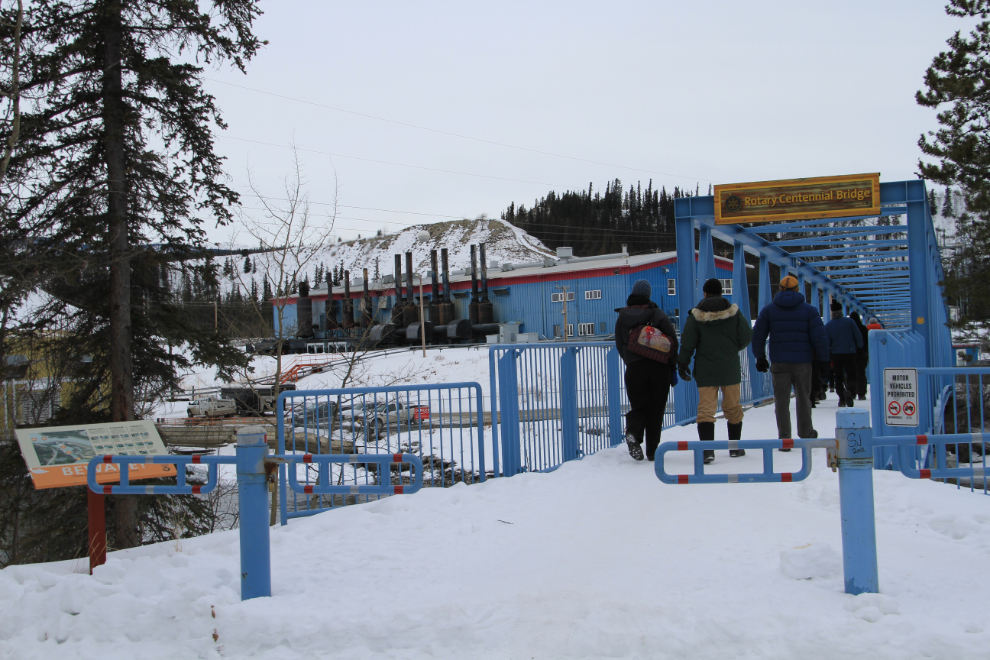
The hydroelectric turbines are in the yellow building, the diesel generators in the blue building. There are 3 hydroelectric plants in the Yukon ñ this one on the Yukon River, one located at Aishihik Lake, and one in Mayo in the central Yukon. Together, the facilities have the ability to generate 92 megawatts (92 million watts) of power.The diesel generators are primarily used in the winter when much of the Yukon River is frozen and so not available for power production. For more information, Yukon Energy has posted a good 16-page brochure about their Whitehorse facilities [archived by the Wayback Machine].
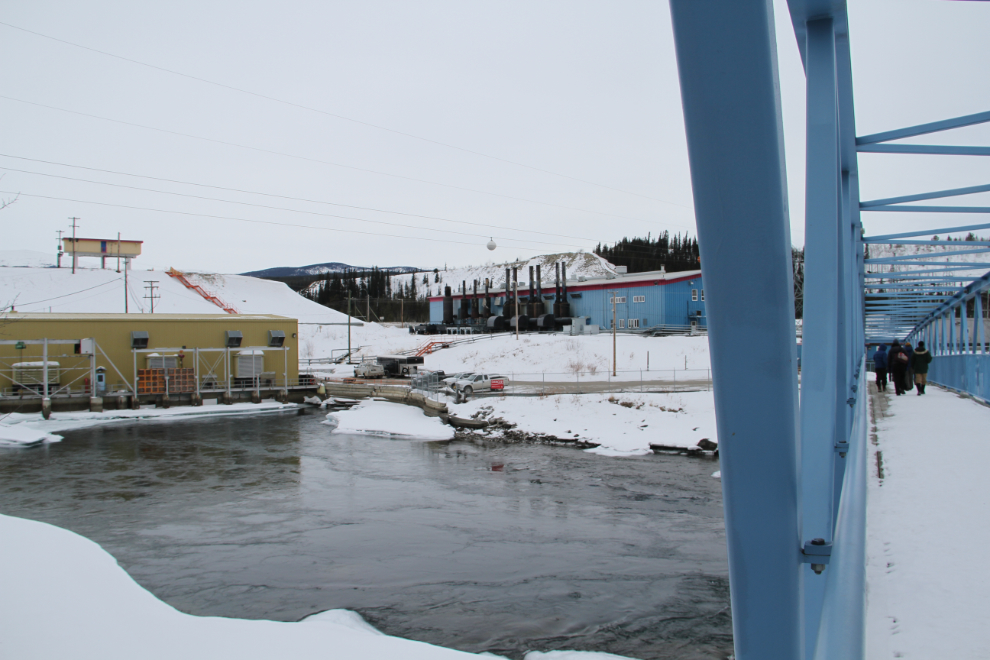
Travis Ritchie, Yukon Energy’s Manager of Environment, Assessment, and Licencing, started the tour off with a half-hour explanation of the basics of power production in the Yukon, then we went up to the control centre, from where most of the facilities throughout the territory can be controlled.

This is a look at the controls for one of the facilities, the Lewes River Control Structure (a.k.a. the Lewes Dam or Marsh Lake Dam). Four of the gates used to control water flow between Marsh Lake and the Whitehorse Dam can be adjusted from here, the others are raised and lowered manually.

This is the view from the huge tinted windows in the control centre.

The first stop outside was the diesel generation plant, but we just went there to pick up hearing protection for everyone – we’d tour it later.
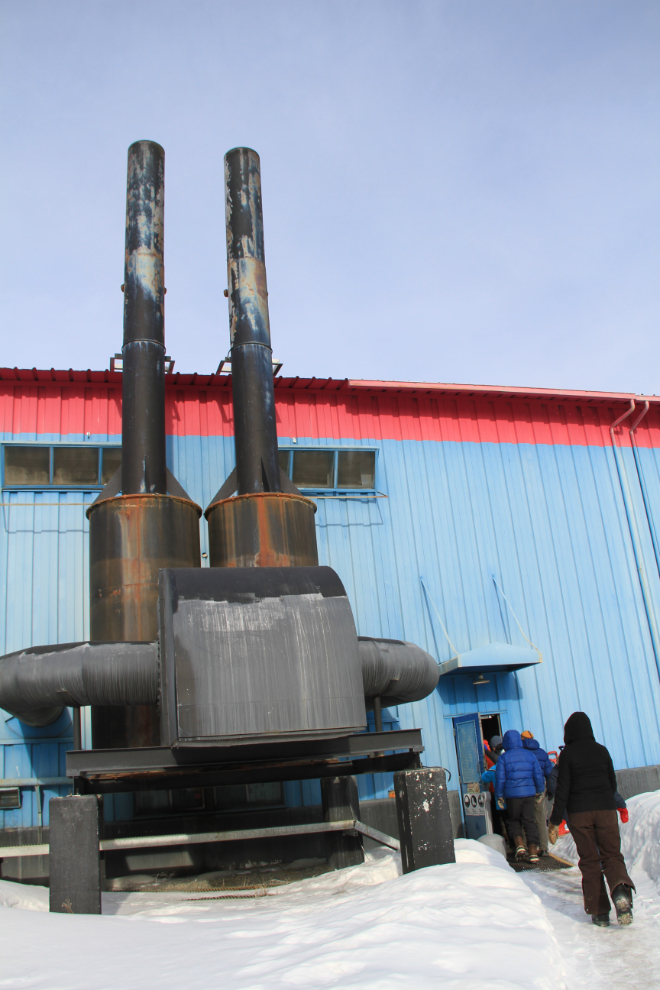
The diesel generators at this end of the plant are the oldest, and are due to be replaced with more efficient units.
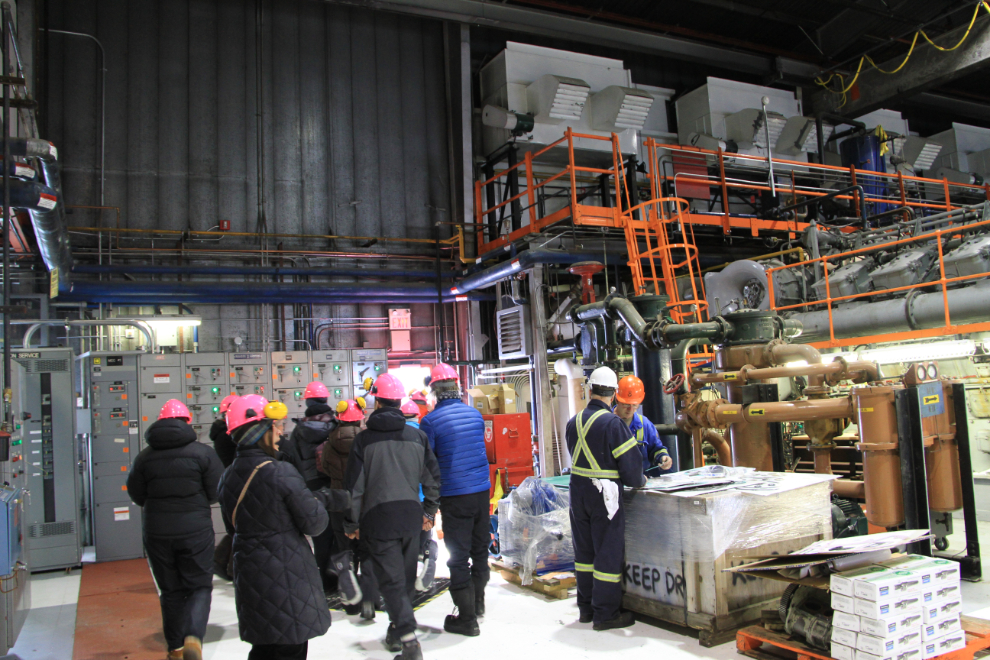
The Whitehorse Rapids generating facility was built in 1958 at a cost of $7.2 million. It began with two hydro turbines, and in 1969 a third one was added. A fourth turbine was installed in 1985, doubling the capacity of the plant, which can now produce 40 megawatts of power in the summer and about 25 megawatts in the winter. Turbine/generator #3 was disassembled for a complete rebuild, which is done about every ten years.
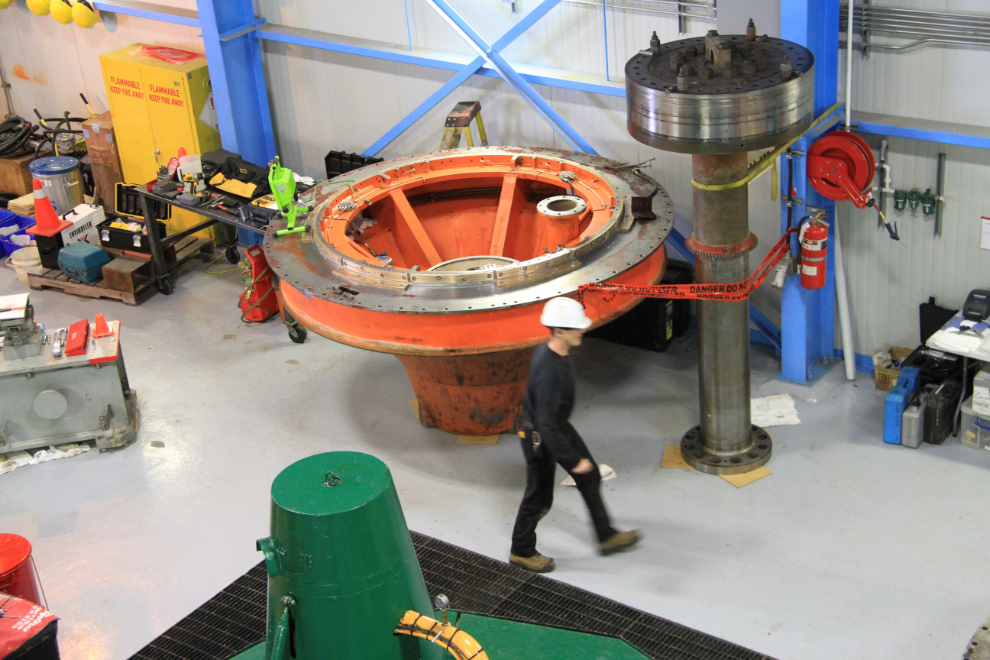
The green unit is Turbine #2, with #3 at the far end of the powerhouse.
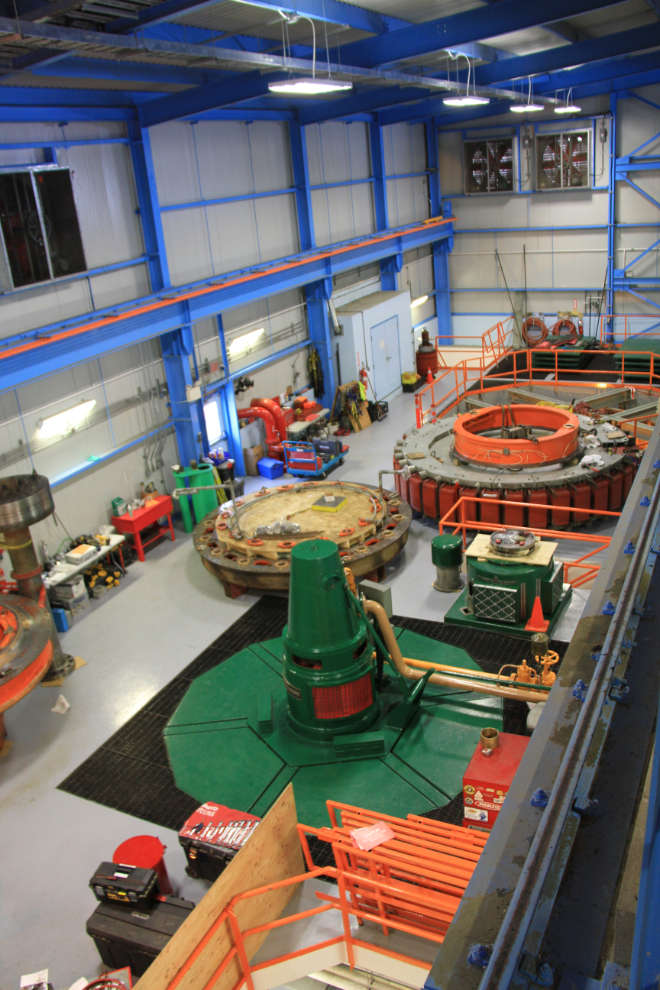
The scale of the equipment is quite impressive.
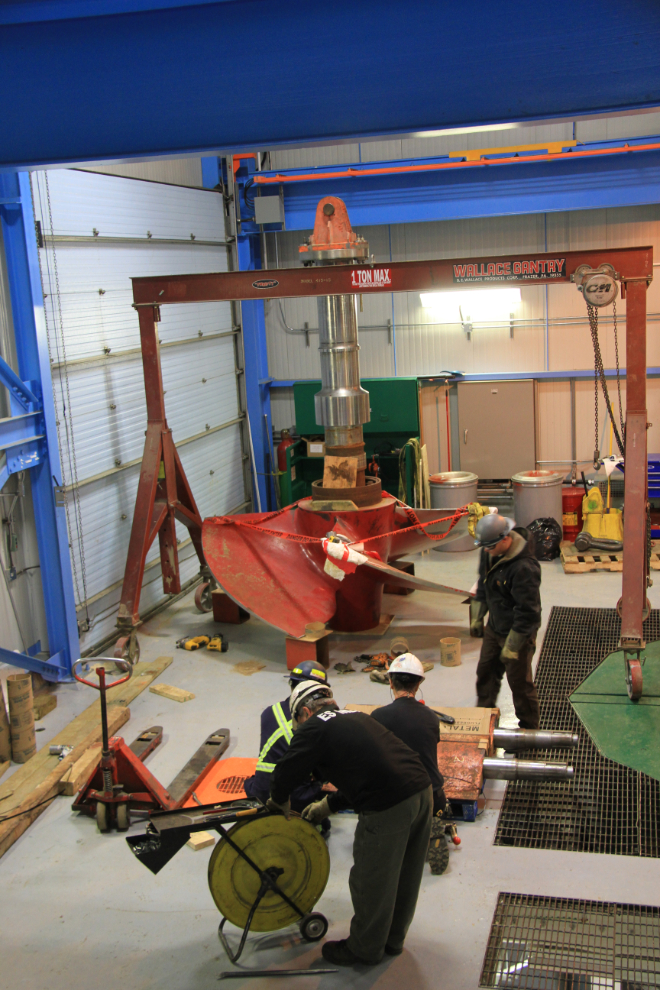
We then went back to the diesel generation plant. This is one of the newest engines, a Caterpillar 3600. A study is now being done to see whether converting these engines to run on natural gas, or replacing them with new units that run on natural gas, would be more cost-effective and environmentally friendly.
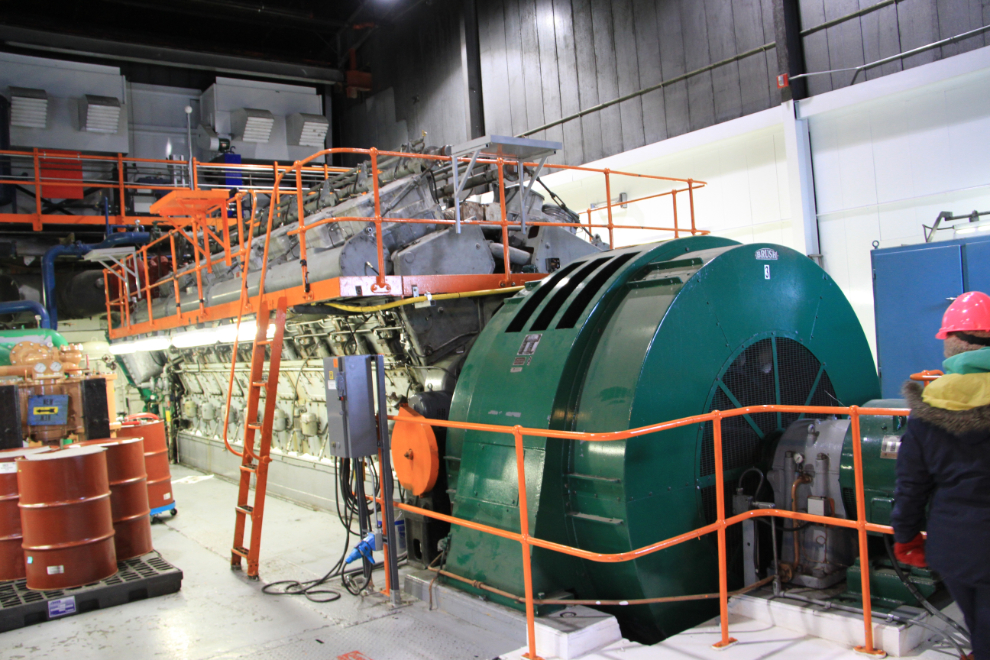
This is the control centre all for the diesels.

The tour took a little over an hour and a half. Travis Ritchie and the other staff members we talked with were excellent. Many members of our group were from some sort of environmental studies class and some great questions were asked – and were answered candidly. Every time I go on this tour I learn something new, and this one was particularly good. When you turn on a light switch at home, you may not care how it works, but learning about the entire process, including the decisions that are made constantly as water, weather and mechanical conditions change, is a worthwhile way to understand the big picture. Will power generation in the Yukon in the future remain as it is now, or will we move to wind, solar, new hydro locations or raised reservoirs, or some other form of enhancement? Right now there are many questions but no clear answers. Fascinating stuff…